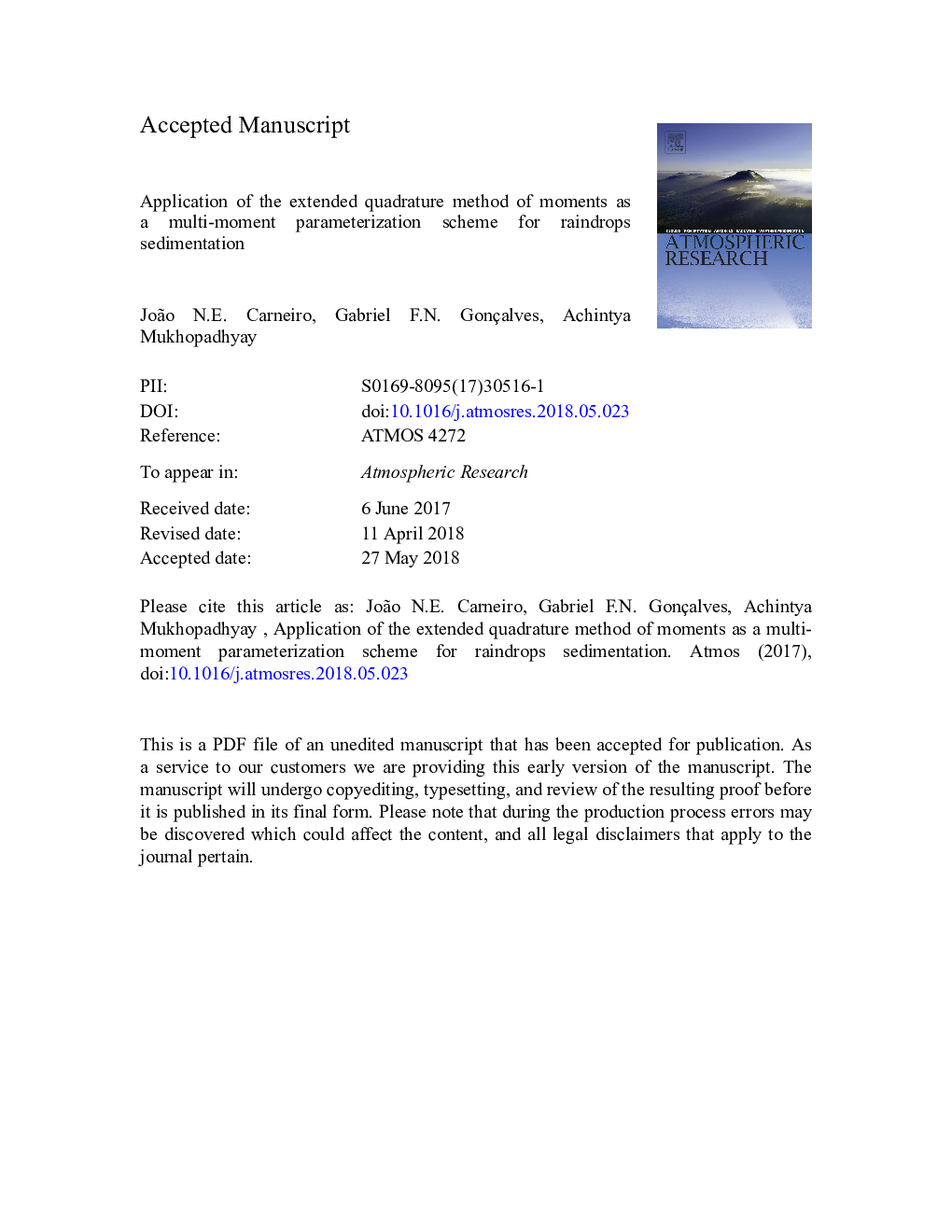| Article ID | Journal | Published Year | Pages | File Type |
|---|---|---|---|---|
| 8864474 | Atmospheric Research | 2018 | 51 Pages |
Abstract
In numerical weather prediction models, previous approaches have employed bulk parameterization schemes based on presumed-number-density-functions or quadrature methods of moments (QMOM). In the present work, a new parameterization based on the extended quadrature method of moments (EQMOM) introduced in Yuan et al. (2012) is applied to the case of pure sedimentation of rain drops (one-dimensional “rain-shaft” test case). In EQMOM, the drop size distribution is represented by a weighted sum of kernel density functions, combining elements of quadrature and presumed functional form methods. In cloud microphysics, moment parameterization is frequently based on Gamma distributions, which guided the choice of the kernel shape employed here. EQMOM allows inclusion of a number of prognostic moments in the method (e.g. M(0)-M(6)), which improves flexibility in the representation of a continuous size distribution. QMOM and EQMOM up to order 3 were applied in two drop sedimentation test cases previously presented in the literature, in which initial states consist of different cloud heights and drop size distribution shapes. Results were compared to a spectral reference model using a number of transported bin sizes showing good agreement. The analysis was focused in the sedimentation induced errors obtained by the different approaches. In QMOM, size sorting due to different fall velocities generates step patterns in the moment profiles. With EQMOM, on the other hand, these artifacts are significantly suppressed. Furthermore, predictions of the number concentration, total liquid content, radar reflectivity, mass mean diameter and rain rates are shown to be greatly improved when EQMOM is employed. Quantitatively, EQMOM is capable of reducing global error measures by nearly one order of magnitude, when compared to results obtained by previous methods in a common benchmark, showing the great potential of the method in the field of meteorology.
Related Topics
Physical Sciences and Engineering
Earth and Planetary Sciences
Atmospheric Science
Authors
João N.E. Carneiro, Gabriel F.N. Gonçalves, Achintya Mukhopadhyay,
